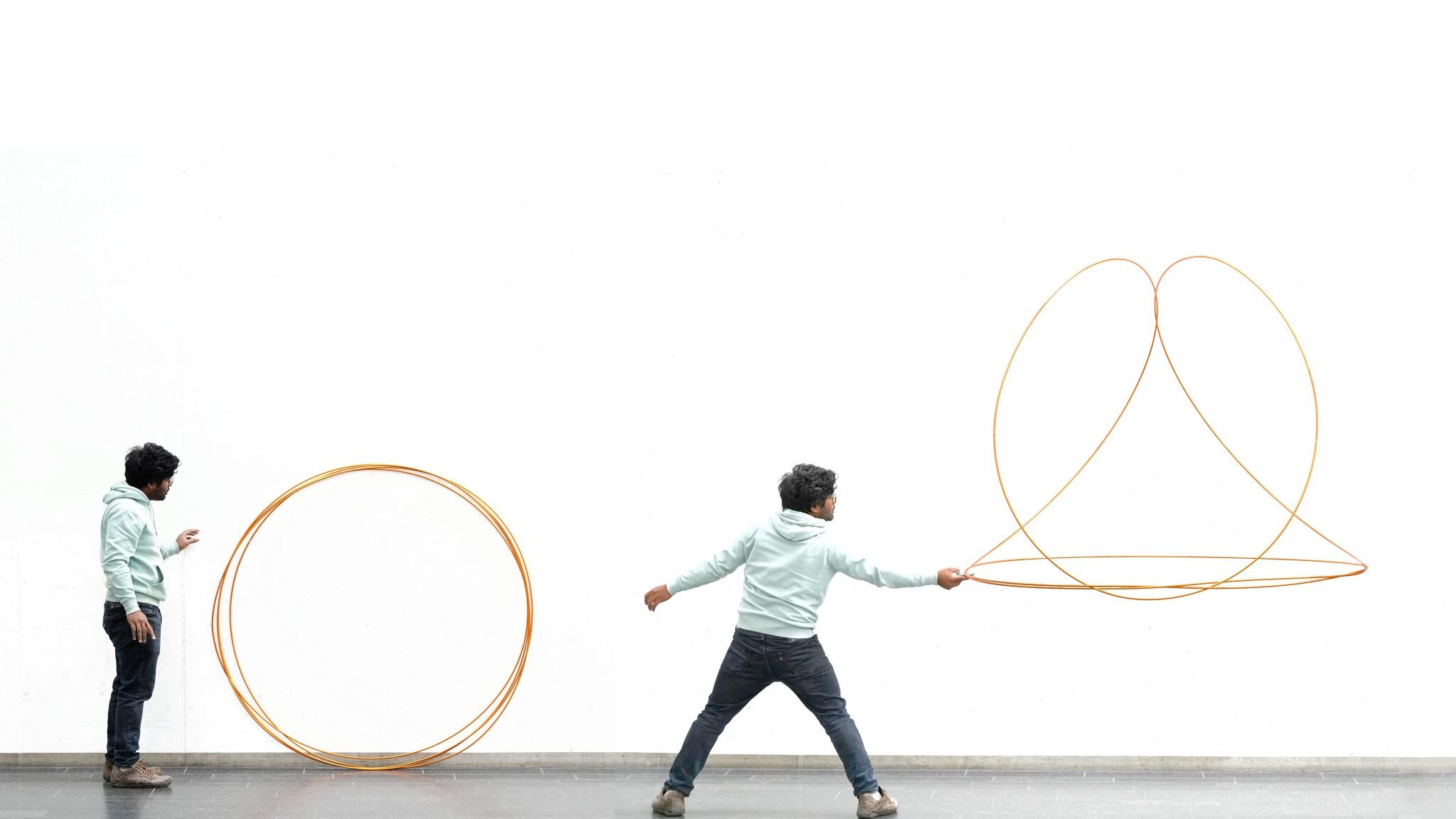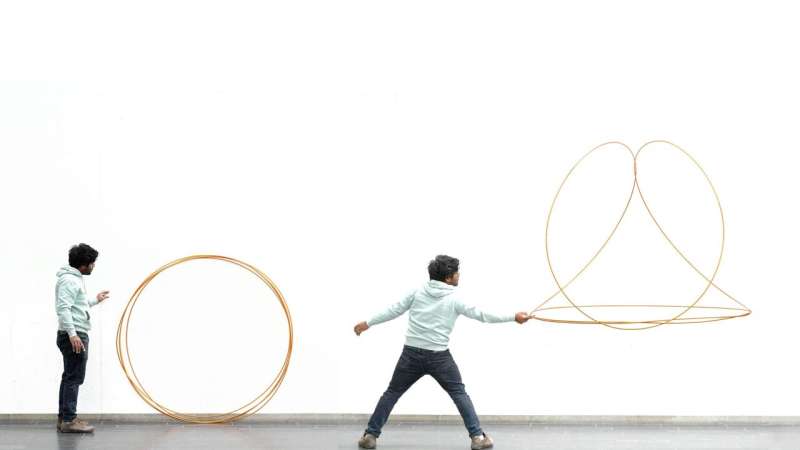

Knots are used in all sorts of ways, every day. They ensure safety both indoors and for outdoor activities such as boating or sailing, are used as surgical sutures, as decorations, and they can even be found at nanoscales in nature, for example in DNA molecules.
Elastic knots are those that bounce back into their original shape in the absence of friction. There are open elastic knots tied with a single length of wire with two ends, which revert to being a straight line, and closed elastic knots in which the ends of the wire used to tie them have been attached together. These tend to spring back into a curved shape.
With a focus on closed knots, researchers in the Ecole Polytechnique Federale de Lausanne Geometric Computing Laboratory, led by Professor Mark Pauly, along with colleagues in Canada and the United States, have discovered thousands of new transformable knots including three novel shapes that the humble figure-eight knot can assume, doubling the number documented to date in scientific literature.
The findings are published in the journal ACM Transactions on Graphics.
To make these discoveries, the team first developed a computational pipeline that combines randomized spatial sampling and physics simulation to efficiently find the stable equilibrium states of elastic knots. Leveraging results from knot theory, they ran their pipeline on thousands of different topological knot types to create an extensive data set of multistable knots.
“By applying a series of filters to this data, we discovered new transformable knots with interesting physical properties and beautiful geometric forms,” explained doctoral assistant Michele Vidulis, the lead author of the paper “Computational Exploration of Multistable Elastic Knots.”
“This rich set of fascinating shapes can be created simply by knotting an elastic wire, and we noticed how such seemingly simple objects can sometimes exhibit tens or even hundreds of different stable shapes. The novel geometric patterns we identified were at times surprising. For example, we found that most—but not all—the preferred shapes of elastic knots are flat and planar, while few of them assume three-dimensional shapes,” Vidulis continued.
The team conducted further analysis across knot types that revealed new geometric and topological patterns with constructive principles not seen in previously tabulated knot types, showing how multistable elastic knots might be used to design new structures.
“As a result of our research, we can see elastic knots being used in the design process of self-deployable structures, like pop-up tents or lightweight emergency shelters. New metamaterials can be designed that combine several elastic knotted elements to build a network with complex mechanical behavior,” Vidulis explained.
The team also created engaging recreational puzzles with the challenge to deform an elastic knot and manually find some of the interesting geometric shapes that they have computed with their algorithms.
As satisfying as these new discoveries are, Vidulis and the team believe that the work opens the way to several other potential new research directions.
“We want to explore the design of self-deployable structures, and consider coupling elastic rods with fabric materials. As well, despite simulating thousands of different knots, our exploration only scratched the surface of the millions of knots that are known. We also plan to study more complex ensembles of knotted systems, in which new mechanical properties might emerge from the way in which the individual components are intertwined to each other,” he concluded.
More information:
Michele Vidulis et al, Computational Exploration of Multistable Elastic Knots, ACM Transactions on Graphics (2023). DOI: 10.1145/3592399
GitHub: github.com/EPFL-LGG/ElasticKnots
Provided by
Ecole Polytechnique Federale de Lausanne
Citation:
Team discovers thousands of new transformable knots (2023, September 5)
retrieved 6 September 2023
from https://phys.org/news/2023-09-team-thousands.html
This document is subject to copyright. Apart from any fair dealing for the purpose of private study or research, no
part may be reproduced without the written permission. The content is provided for information purposes only.